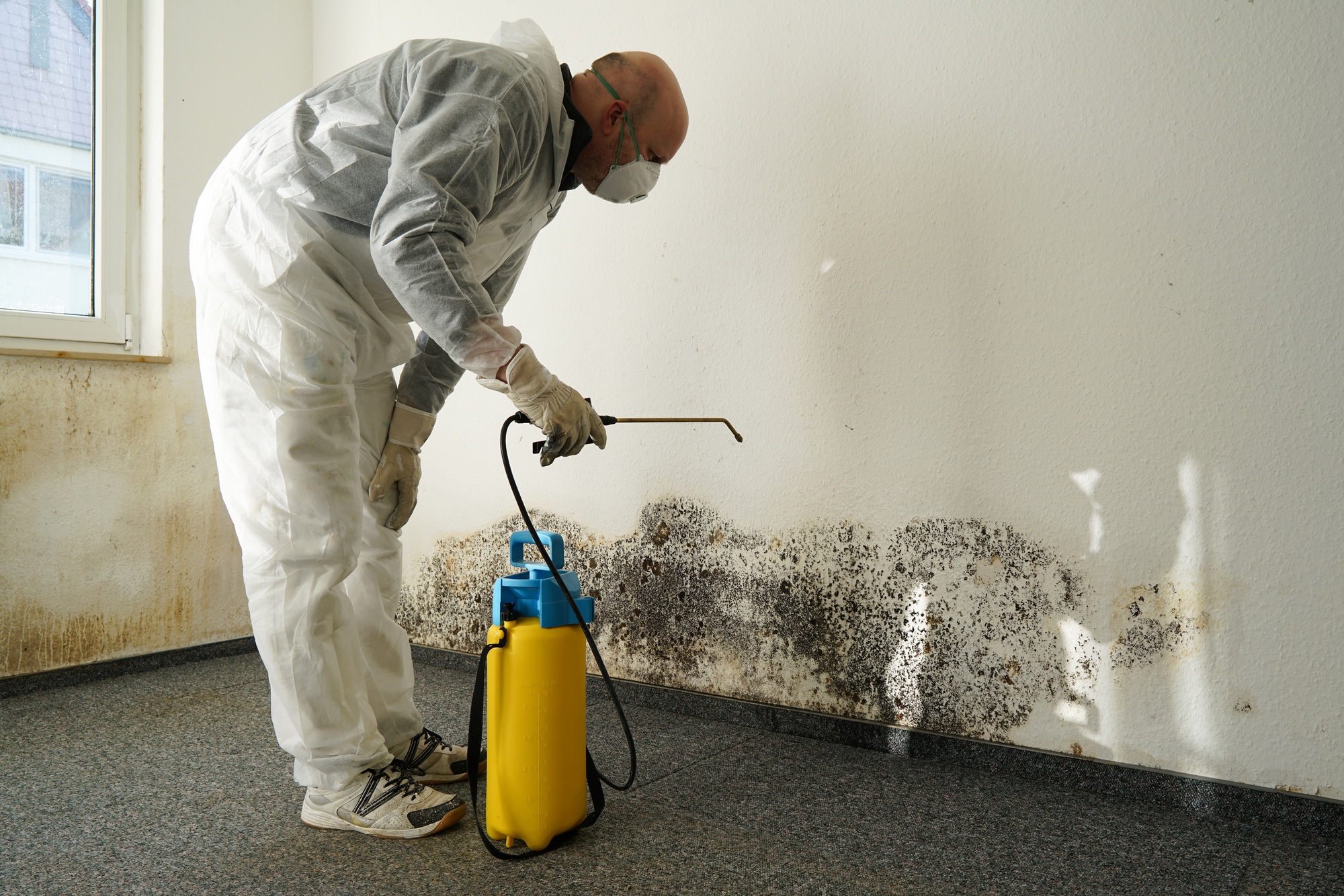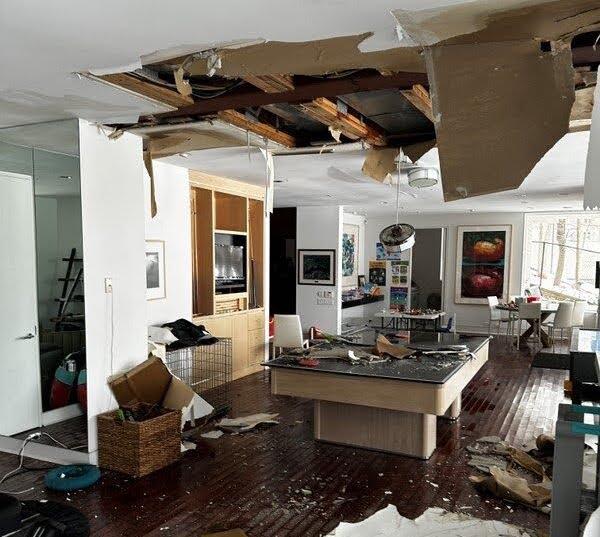Water Damage Cleanup Experts Offering Prompt and Efficient Solutions
Wiki Article
The Process of Water Damage Clean-up: Ensuring Your Home Is Brought Back Properly
Water damage can be a difficult obstacle for home owners, necessitating a precise and structured cleaning procedure to restore safety and functionality. At first, a detailed analysis is essential to identify the extent of the damage and determine the appropriate remediation measures. Following this, reliable water extraction methods play an essential function in alleviating additional damage. The subtleties of drying out, sterilizing, and eventual restoration are just as necessary and commonly ignored. Understanding these stages can make a substantial distinction in the outcome of your home's restoration, motivating a closer take a look at what each step requires.Assessing the Damages
Upon discovering water damages, the first action is to thoroughly analyze the degree of the influence. This preliminary analysis is vital, as it helps figure out the needed steps for reliable cleanup and remediation. Begin by checking the influenced locations, including wall surfaces, ceilings, floorings, and personal items, to identify the resource of the water breach, whether from flooding, leaks, or condensation.Documenting the damages is important for both insurance policy claims and preparing reconstruction initiatives - damage restoration services. Usage photos and written notes to record the extent of the damages, keeping in mind any kind of affected architectural components and materials. Pay special interest to locations that may not be promptly noticeable, such as behind walls and under rugs, as concealed dampness can result in additional difficulties, including mold growth
In addition, assess the timeline of the water exposure. The longer the materials continue to be damp, the greater the potential for damage. Comprehending the period of direct exposure will notify the necessity of removal efforts. Ultimately, an extensive evaluation prepares for an effective water damages cleaning procedure, ensuring that all affected areas are dealt with successfully and extensively.
Water Removal Strategies

Professionals generally utilize submersible pumps for larger volumes of water, which can rapidly ease flooding in cellars or various other impacted locations. For smaller quantities, wet/dry vacuums are typically utilized to draw out residual moisture from carpets and tough surface areas. In addition, making use of mobile extractors enables targeted removal in restricted spaces or areas with fragile products.
In circumstances of polluted water, such as sewage or floodwater, advanced removal strategies might include making use of biohazard equipment to ensure safety and security and conformity with health and wellness guidelines. High-powered extraction tools are crucial in decreasing water retention in architectural materials, which can result in mold development and architectural wear and tear if not resolved without delay.
Eventually, the efficiency of water extraction strategies plays an essential role in the total success of the water damage clean-up procedure, laying the foundation for subsequent reconstruction initiatives.
Drying and Dehumidification
Once standing water has actually been successfully extracted, the following important phase in the water damages clean-up process is drying out and dehumidification. This step is important to protect against additional damage and mold and mildew growth, which can take place within 24 to 48 hours in moist settings.To accomplish efficient drying out, specialized devices such as industrial-grade air movers and dehumidifiers is used. Air movers flow air across damp surfaces, improving evaporation prices, while dehumidifiers reduce moisture degrees in the air, promoting a helpful environment for drying out. The mix of these tools ensures that wetness is attracted out from furnishings, floorings, and walls, enabling them to completely dry thoroughly.
It is crucial to monitor the drying procedure closely. Experts usually use wetness meters to analyze the moisture material in numerous products, ensuring that all impacted locations get to appropriate dryness levels. This meticulous method aids to prevent covert wetness pockets that can lead to structural damage or unhealthy mold and mildew development.

Cleaning and Disinfecting
After the drying out and dehumidification phase is total, the following essential step in water damage clean-up is cleansing and sanitizing the impacted locations. This procedure is essential to stop the development of mold, germs, and various other virus that grow in damp environments.The cleaning phase commonly entails removing any debris, dirt, and pollutants from surface areas making use of specialized cleansing representatives. For tough surface areas, a mix of soap and water or commercial cleaning products is often employed. Soft materials, such as upholstery and carpets, may require much more substantial cleansing techniques, consisting of heavy steam cleansing or deep extraction methods, to make sure complete hygiene.

Sterilizing follows cleaning, using EPA-approved disinfectants to eliminate hazardous microorganisms. This step is essential, specifically in locations that might have come into contact with floodwaters or Resources sewer, as these resources can present major health risks.
Additionally, it is essential to deal with any remaining smells, which may require making use of smell neutralizers or advanced techniques like ozone therapy. Appropriate cleaning and disinfecting not only restore the safety and security and hygiene of your home but additionally prepared for successful reconstruction and repair services in subsequent phases of the water damage cleaning process.
Reconstruction and Repair Work

When the analysis is total, reconstruction efforts can start. In addition, flooring might require similar focus, depending on the level of water exposure.
It is critical to engage knowledgeable restoration experts throughout this process, as they possess the knowledge to manage complex repair work properly. Additionally, they can help reduce possible future issues, such as mold growth or architectural instability, hence ensuring a risk-free and habitable living setting. Inevitably, effective remediation and repair work bring back the home's honesty and boost its total worth.
Verdict
To conclude, the process of water damage cleanup is vital for bring back a home to its pre-damage problem. Each stage, from examining the damages to carrying out reliable water removal methods, complied with by detailed drying out, disinfecting, and needed fixings, plays a crucial duty in guaranteeing safety and compliance with building criteria. Reliable implementation of these steps not only mitigates immediate damages yet additionally improves the long-term integrity and worth of the property.Water damages can be a difficult difficulty for property owners, necessitating a thorough and organized cleaning process to recover security and performance. Ultimately, a thorough evaluation lays the groundwork for an effective water damage cleanup procedure, guaranteeing that all affected locations are dealt with properly and completely.
Effective water removal techniques are crucial in damp damage alleviating damage and protecting against additional complications complying with a water intrusion occasion.In conclusion, the procedure of water damages clean-up is remove flood water essential for bring back a home to its pre-damage problem. Each stage, from assessing the damages to executing reliable water extraction strategies, complied with by extensive drying, disinfecting, and required repairs, plays a necessary role in making certain safety and conformity with building standards.
Report this wiki page